- Home
- Diana Wynne Jones
Reflections Page 3
Reflections Read online
Page 3
But when all is said and done, there is an aspect to fantasy which defies description. Those children in the wood are going to grow up and remember that they played there. They will not remember what they were playing, or who pretended what. But they will remember the wood, and the big city all round it, in a special, vivid way. It does seem that a fantasy, working out in its own terms, stretching you beyond the normal concerns of your own life, gains you a peculiar charge of energy which inexplicably enriches you. At least, this is my ideal of a fantasy, and I am always trying to write it.
The Shape of the Narrative in
The Lord of the Rings
First published in 1983 in J. R. R. Tolkien: This Far Land, edited by Robert Giddings (Vision Press), this article was also reprinted in Diana’s 1995 collection Everard’s Ride, published by NESFA Press.
When I say “narrative,” I do not mean simply the plot. I mean considerably more. Plots and their shapes—the bare outlines of stories—were something I know J. R. R. Tolkien himself was interested in. When I was an undergraduate, I went to a course of lectures he gave on the subject—at least, I think that was the subject, because Tolkien was all but inaudible.1 He evidently hated lecturing, and I suspect he also hated giving his thoughts away. At any rate, within two weeks he succeeded in reducing his substantial audience to myself and four others. We stuck on, despite his efforts. He worked at it: when it did appear that we might be hearing what he said, it was his custom to turn round and address the blackboard. Dim inklings alone reached me of what he meant, but these were too fascinating to miss. He started with the simplest possible story: a man (prince or woodcutter) going on a journey. He then gave the journey an aim, and we found that the simple picaresque plot had developed into a quest story. I am not quite sure what happened then, but I know that by the end he was discussing the peculiar adaptation of the quest story which Chaucer made in his “Pardoner’s Tale.”
As you see, Tolkien did not give away half of what he knew, even about plots, and I suspect he never talked about narrative at all, but it is clear from The Lord of the Rings that he knew all about narrative as well. The plot of The Lord of the Rings is, on the face of it, exactly the same simple one that he appeared to describe in his lectures: a journey that acquires an aim and develops into a kind of quest. But the bare plot is to any writer no more than the main theme of a sort of symphony which requires other themes added to it and the whole orchestrated into a narrative. To shape a narrative, you have to phase the various incidents and so control their nature that you set up significances, correspondences, foretastes, and expectations, until your finished story becomes something else again from its simple outline. Tolkien does this orchestrating supremely well: so much so that, by various narrative sleights-of-hand, he almost reverses the normal flow of a quest story, or at least makes an adaptation of it every bit as peculiar as the one he described in his lectures, and nobody ever notices. It continues to fool me even now, though I think I can see what he is up to.
The Lord of the Rings is organized in movements, just like a symphony, but with this difference: each movement has an extension, or coda, which reflects partly back on the movement just completed, and partly forward to what is to come. This coda is highly characteristic of Tolkien’s method, and it becomes increasingly important as the narrative proceeds. You always have to watch what happens in these codas. And yet they, and the movements which precede them, in no way interfere with the story, the actual events being described, which appears to march steadily forward and to unfold with the utmost clarity and regularity. This limpid tale of events is one of Tolkien’s major achievements, when you consider all the other things he was doing too. However, one thing he was not doing was striving to put it all in elegant language. His manner is at all times prolix and a little threadbare. The most he will do is to attempt a rough appropriateness. When he is dealing with Hobbits, he is chatty and a little arch: “If Frodo had really wanted to write a book and had had many ears, he would have learned enough for several chapters in a few minutes” (I, 167).2 In more awesome places, he uses a hackneyed high style: “Then his wrath blazed in a consuming flame, but his fear rose like a vast black smoke to choke him” (III, 223). It is symptomatic, I think, that he at all times overworks the word “suddenly.” To take the most random sample: “Suddenly he knew in his heart . . .” (I, 225); “Suddenly the lights went out” (II, 197); “Suddenly the silence was broken” (III, 127). As I know well enough myself, “suddenly” is a word hard to avoid in this kind of narrative. For Tolkien, as D. S. Brewer points out,3 was writing a Romance in the old sense of the word. A Romance, unlike a novel, does not aim to draw attention to the way it is written. Tolkien was far more concerned with the matter of his narrative than its manner, and he only exercised his undoubted gift for language in inventing names, particularly names of places—which is again exactly in the tradition of a Romance. I always wish that Tolkien’s many imitators would notice how comparatively modest his language is, and not insist on writing their stuff in translationese.
The first movement of the narrative lasts until the flight from Bree. Here, along with the chatty manner, we are in a cozy Hobbit world not very far removed from that of fairy tales and nursery rhymes. Hobbits have that prosaic fubsiness one associates with a certain kind of children’s story. And they are agreeably greedy and, above all, secure. But there is more to it than that. Throughout this section, Tolkien, like Lewis Carroll before him, is drawing heavily on the landscape round Oxford where he lived. Just as, I am sure, the chessboard view of three counties from White Horse Hill suggested Alice Through the Looking-Glass, it surely also gave rise to the Shire. But Tolkien took a leaf out of William Morris’s book too, The Well at the World’s End, and drew on the whole Upper Thames Valley. Here there are stuffy willow-choked flats, Wychwood, rivers like the Windrush and the Evenlode, the Rollright Stones, the long barrow called Wayland’s Smithy, plow land and orchards round Didcot, the Seven Barrows, Thames water meadows, and the austere landscape of the chalk downs. And he used them all: there is even a real place called Buckland. Three other things he did not use here, though they are immensely important in the rest of the book, are the Thames itself; the old prehistoric road called the Ridgeway, which is probably the oldest road in Britain, leading from east to west (like the way to the Grey Havens), sometimes as a cart track, sometimes as broad as a motorway, and at other times vanishing in a valley; and finally a strange Oxford phenomenon, whereby the streets of the town are at times filled with a scent of distant flowers, for hours on end, as if one were smelling Heaven somehow. This is in a manner setting a thief to catch a thief, since I lived in Oxford for many years too and tend to use these things as well, but it is not important to know about them. I only draw attention to them to point out this first of Tolkien’s narrative sleights-of-hand: by writing of things which were home to him, he contrives to give the reader a sense of home and security too.
But he is about to do something much more complicated than Carroll or Morris. He opens with a party. A burst of fireworks and fun. And here at once he surreptitiously introduces three major themes. The first, and by far the most important for the rest of the book, is the pressure of events which have happened long before the story opens. Later, this pressure comes from the far-off heroic past; but here it is underplayed, deftly, and seems merely to be a hangover from Bilbo’s former mad journey. Which of course brought the Ring into Bilbo’s possession. The Ring, whatever else it does, always brings the tragic past into the present. But at this stage Gandalf, in a pedagogic way in keeping with the homely tone, simply makes Bilbo give the Ring to Frodo and retire into the past himself.
But make no mistake. Undertones of the heroic and of the chivalry of Medieval Romances are being firmly introduced too, in the other two themes. One of these is the Quest itself. Because of the beguiling domesticity of the Shire and Tolkien’s manner at this point, you are lulled into thinking of it in fairy-story terms: the hero journeys to a confrontation a
nd receives supernatural help on the way. Of course the hero wins. And yet it starts with a party, like the best-known of all high romances, the stories of King Arthur. A Quest nearly always begins with the King feasting in Camelot. Enter a damsel or a churl demanding a boon. In this case Gandalf, and the Quest is delayed, but the pattern is there. And you should remember that, though a lot of quests, like that of Sir Gareth, prove the hero a man, a great many, like Gawain’s with the Green Knight or that of the Grail, do no such thing. Furthermore, the title of the most famous collection of Arthurian Romances, Malory’s, is The Death of Arthur. In fact, You Have Been Warned—although you need only feel a little uneasy at the moment.
For his third theme, Tolkien also drew on romances. The poet of Gawain and the Green Knight calls King Arthur “sumquat childgered”—i.e., rather boyish. Froissart too regards this as the most chivalrous aspect of real knights (and so did Kipling later). Sir Percival is traditionally naive to childishness. And so are the Hobbits who set out on their journey. So you have a notion here which at once reinforces the prevailing nursery-tale atmosphere and contradicts it: it is cozy, but it is also heroic.
It seems reasonable to mention these things because it is quite certain that Tolkien had them at his fingertips. The marvel is that he was capable of handling them, just as he did with the Oxford landscape, so that it is not necessary for the reader to know them in order to get the message. The message is a fourth theme, also thoroughly traditional, which these three come together to suggest: people have gone downhill from the heroic days. Now it is ordinary people who have to cope as best they can.
So Bilbo plays his practical joke and vanishes. Frodo lingers, even after Gandalf has reappeared and introduced seriously for the first time the deep notes of the distant past. It is typical of this movement that the history is Hobbit-oriented and concerns Gollum as much as Sauron and Isildur. Frodo, with what we are meant to consider dramatic irony, repudiates Gollum. The lingering ensures that, as Frodo and his companions set off, autumn is coming on, with all that can imply. We are meant to take the point that local changes of season are cosmic in origin, but attention is on the domestic landscape through which the Hobbits journey. This is so solidly persuasive that Tolkien is able to introduce the Ringwraiths with the lightest of touches. A few words, and they are spine-chilling. A black figure sniffing for you. They are childhood nightmares and gaps in the order of things, just with that.
Then a new theme enters, as the Elves intervene in their remote way. Their songs are of departed glories, which are still, it seems, things to conjure with. It is the past-history theme again, but it has a powerful woodwind nostalgia. It begins—just—to suggest that the coming autumn is a season of Middle-earth, not only of the year. But the scene is still so firmly local that all you get at this stage is a sense of yearning, both for the past and for the Sea-crossing of the future. The present is detached from the Elves. The story has begun to spread a little in time, and a little in space too.
Anyway, we are briskly back again to the domestic, with the matter of the mushrooms and the adventure-story excitement of the river crossing and the escape through the Hedge. The Hobbits muddle through, until they get into real trouble with the sinister Old Forest. This too is wonderfully spine-chilling by reason of being only just removed from a real wood. Even Old Man Willow is solidly a real willow tree. And once again they need rescuing, this time by Tom Bombadil. By now, it looks as if the fairy-story pattern, of travelers being saved from their own errors by supernatural intervention, is here to stay.
I find Tom Bombadil supremely irritating myself. I am well aware that he is a chthonic figure seen from, as it were, knee high, and I can see his presence here is important, standing as he does between earth and sky in the first truly open country, but I am always glad when he is dismissed by Elrond. It is a relief to have him distanced with high-sounding names as Iarwain, Forn, and Orald. As Bombadil, he is perverse and whimsical. He is the quintessence of the nursery story gone wrong, as it does from then on. Tolkien was quite right to put him in, but I wish he hadn’t. He was quite right because here, in the haunting country of the Barrows—which was still domestic to Tolkien, though not perhaps to his readers—dead history, with all its wasted heroism and lingering evil, literally comes up and grabs the Hobbits. The Barrow-wights, however, are not strictly this: they are spiteful ghosts. All the same, this is where Tolkien does, briefly, confront you with the scale of his narrative. Tom is near eternal. The bones in the Barrows are so old their deeds have been forgotten. The present is represented by the Hobbits, apparently neither very noble nor very effectual. Around them the landscape first opens, then closes to lead them to death’s door, and from the dead they acquire a knife that will be important later. It is a notable piece of foreshadowing, which ends in their rescue by Tom.
This is really the last time they are rescued in this way. That comforting pattern, and the movement, ends with their doings at Bree, which is, not insignificantly, a town half of men and half of Hobbits. Men are now going to enter into the picture. The nursery tales, despite the cozy inn scene, are done with. And—this is an example of Tolkien’s ability to use surreptitious themes from elsewhere—Frodo, like Adam and Eve and all the failures of fairy stories, has come there under a prohibition: not to put on the Ring. Which he proceeds to disobey. The fact that he puts the Ring on while singing a nursery rhyme only underlines the fact that such things are now inappropriate. And the movement ends with the same thing as it began.
The coda to this movement is very short but packed out with adumbrations: a journey of hardship over a desolate landscape, toward a hill topped with fires. While purporting simply to carry on the story, this section does all manner of things. It spreads the narrative considerably in space, and in time too. The past reappears in two forms, first as the petrified Trolls, harking back to Bilbo’s adventures, and then, far more potently, as the Black Riders. It now becomes clear that the Ringwraiths are not simply terrifying but that they can harm the living. That they could win. We should remember here that Bilbo’s victory over the Trolls had been almost by luck. Frodo is almost not lucky. And, when they race to the Ford and it appears that even an Elf-lord has limited powers, your doubts increase, although you still hope for the supernatural rescue that the main movement has led you to expect. It comes, after a fashion, in the confusion at the Ford. This confusion, considering Tolkien’s ability everywhere else to present landscapes and events with total clarity, must be deliberate. It must look forward to the profusion of doubtful events to follow. I do not think it comes off at all, but it does provide a wonderful introit to the ordered peace and measured debate of the next movement.
Rivendell is the Last Homely House of The Hobbit. But of course it is no such thing. It is under threat from Mordor. You realize this and cast your mind back, uneasily trying to find someone or somewhere that is safe and homely. Bree? Tom Bombadil? No, not even him. And the Ringwraiths were in the Shire too. Even before the debate begins, you become aware that the only defense can be some form of attack. But this is not for Frodo to decide: he has reached his limited objective. The narrative stops short and reassembles itself by means of the debate.
Tolkien performs several remarkable narrative feats here. One is of course the retrospective doubts cast back on the earlier illusion of security. But the one which amazes me most is the fact that the debate is not in the least boring. It could be. Milton, in a similar situation, almost is. But there are so many questions by now raised that need answers, and so many new people to present—Gimli, Legolas, Boromir, Strider in his new role as Aragorn, Elrond revealed as truly half Elf, Gandalf acquiring new stature, and news of Gollum’s escape—that I find my attention truly riveted. For the first time, the major themes enter undisguised, and you are made aware not only of the depths of past history, but also of the huge spread of the land affected by it. You are shown a divided kingdom now reduced to a few outposts, once again threatened and likely this time to dwindle away. Elves,
Dwarves, Men, and Hobbits are all likely to go down with it. A solution is propounded: destroy the Ring.
And this is the other amazing feat of narrative: you are told, this early on, exactly what is going to happen. And you are still in doubt that it will. Each of the Fellowship of the Ring says exactly what his intentions are, and yet you do not believe they will do as they say. Each time I read it, I am still pained and shocked when the Fellowship divides later on. I am still in doubt that the Ring will be destroyed, or what good it would do if it was. It seems to me to need some explaining how Tolkien got away with it.
The main answer, I think, is the depth and variety of the history he invokes in the course of this movement. I suppose it is a commonplace that he took over the idea of the inset histories and legends from the Anglo-Saxon poem Beowulf, in which each inset vaguely echoes the action in the poem’s present and each is progressively more doom laden, but I am not sure if it is realized how thoroughly Tolkien adapted the notion to his own purposes. Beowulf uses the things purely for atmosphere. Tolkien uses his histories that way too, but only secondarily. His primary use for history is as a motive power, pushing his present-day characters into certain actions, to bring about the future. He presents us with triple measure: Elven history, mostly as hints and songs, immeasurably old and indicating the Elves are a dying race; that of men and Dwarves, both of whom have more than once flourished heroically and then been decimated by the power of Sauron; and Hobbits, who have existence rather than history. All (except for the Hobbits) are united by owning rings of power and are united again in their opposition to the One Ring. Thanks to the Elves, there is a huge time span here, showing a continuous falling off. Elrond says, “I have seen three ages in the west of the world, and many defeats, and many fruitless victories” (I, 256). The effect of this, on top of the first movement’s suggestion that only ordinary folk are left to cope, is to present the Fellowship, once formed, as a thread-thin company. It is as narrow in numbers and space as the present moment is in time. Against the past weight of failure, its only hope seems to be to hang together.

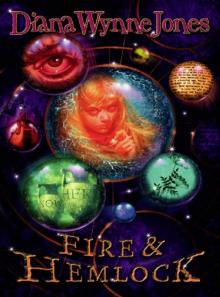 Fire and Hemlock
Fire and Hemlock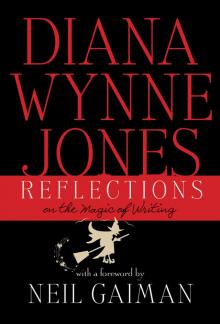 Reflections: On the Magic of Writing
Reflections: On the Magic of Writing The Game
The Game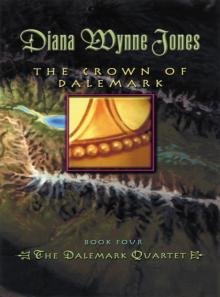 The Crown of Dalemark
The Crown of Dalemark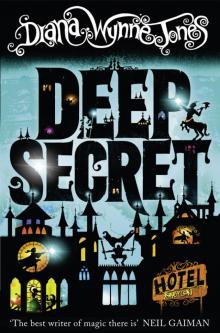 Deep Secret
Deep Secret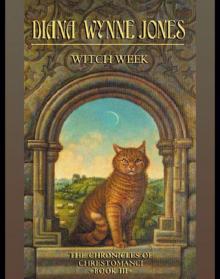 Witch Week
Witch Week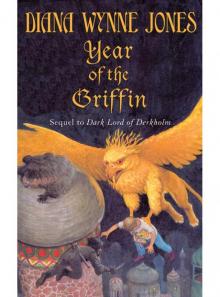 Year of the Griffin
Year of the Griffin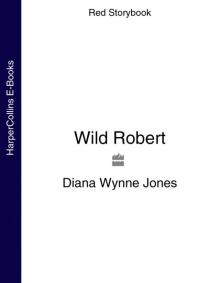 Wild Robert
Wild Robert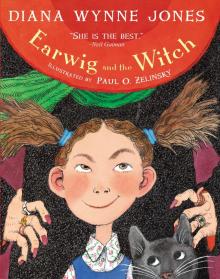 Earwig and the Witch
Earwig and the Witch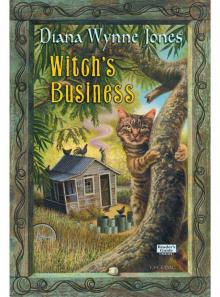 Witch's Business
Witch's Business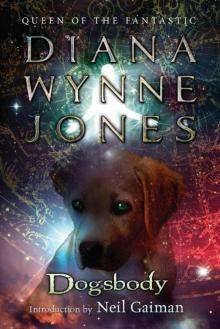 Dogsbody
Dogsbody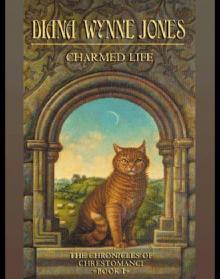 Caribbean Cruising
Caribbean Cruising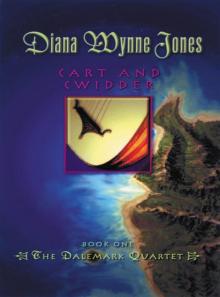 Cart and Cwidder
Cart and Cwidder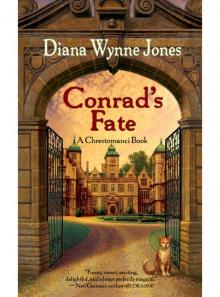 Conrad's Fate
Conrad's Fate Howl's Moving Castle
Howl's Moving Castle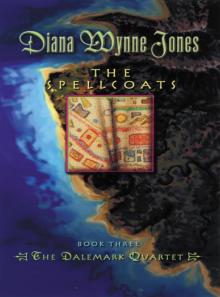 The Spellcoats
The Spellcoats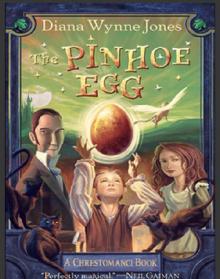 The Pinhoe Egg
The Pinhoe Egg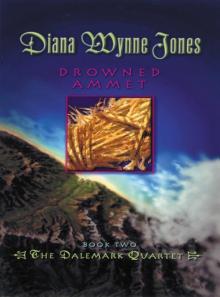 Drowned Ammet
Drowned Ammet The Ogre Downstairs
The Ogre Downstairs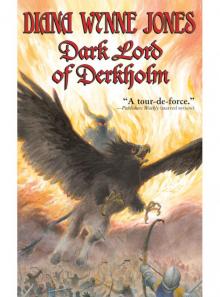 Dark Lord of Derkholm
Dark Lord of Derkholm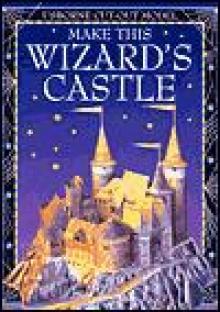 Castle in the Air
Castle in the Air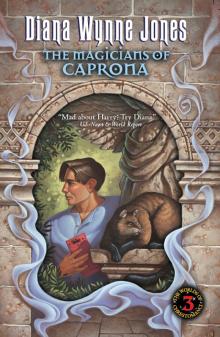 The Magicians of Caprona
The Magicians of Caprona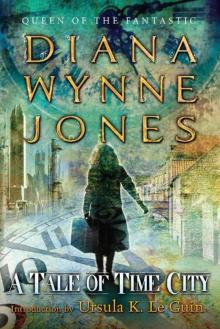 A Tale of Time City
A Tale of Time City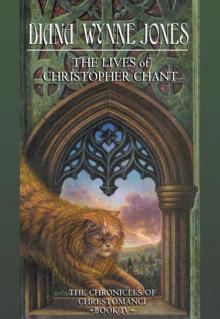 The Lives of Christopher Chant
The Lives of Christopher Chant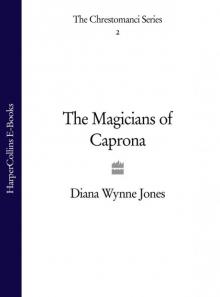 The Magicians of Caprona (UK)
The Magicians of Caprona (UK)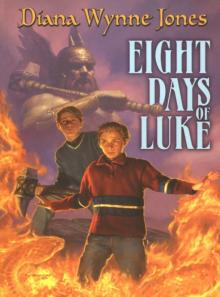 Eight Days of Luke
Eight Days of Luke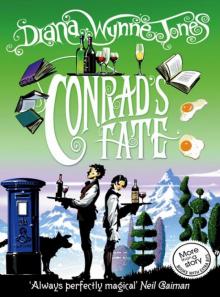 Conrad's Fate (UK)
Conrad's Fate (UK)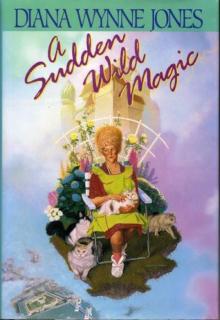 A Sudden Wild Magic
A Sudden Wild Magic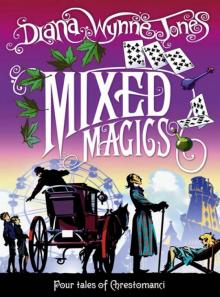 Mixed Magics (UK)
Mixed Magics (UK)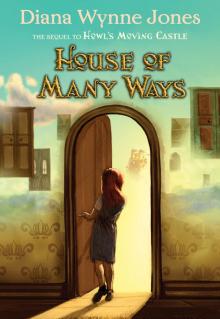 House of Many Ways
House of Many Ways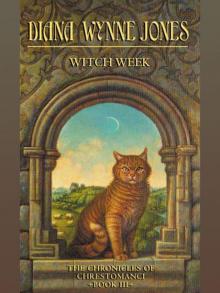 Witch Week (UK)
Witch Week (UK)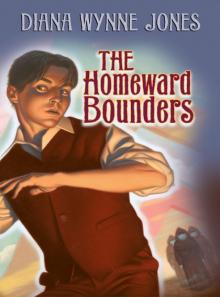 The Homeward Bounders
The Homeward Bounders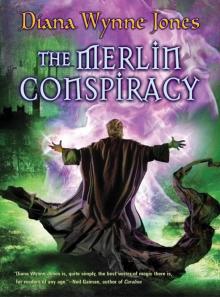 The Merlin Conspiracy
The Merlin Conspiracy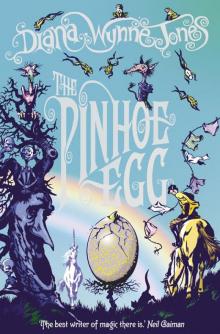 The Pinhoe Egg (UK)
The Pinhoe Egg (UK) The Time of the Ghost
The Time of the Ghost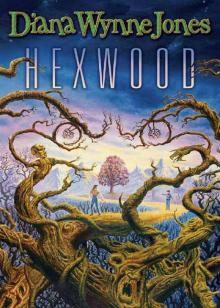 Hexwood
Hexwood Enchanted Glass
Enchanted Glass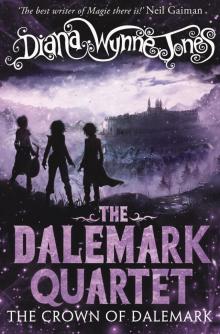 The Crown of Dalemark (UK)
The Crown of Dalemark (UK)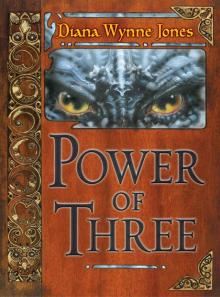 Power of Three
Power of Three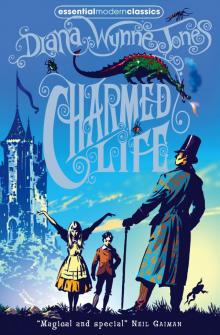 Charmed Life (UK)
Charmed Life (UK)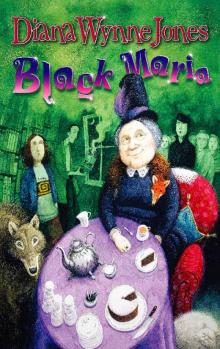 Black Maria
Black Maria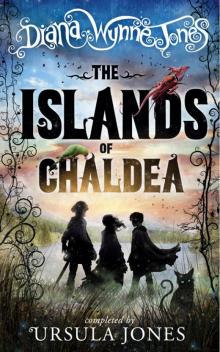 The Islands of Chaldea
The Islands of Chaldea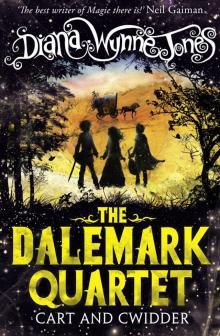 Cart and Cwidder (UK)
Cart and Cwidder (UK)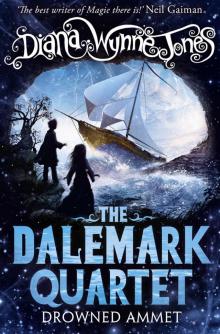 Drowned Ammet (UK)
Drowned Ammet (UK)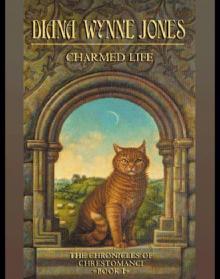 Charmed Life
Charmed Life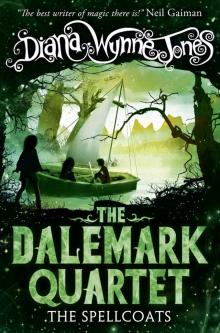 The Spellcoats (UK)
The Spellcoats (UK)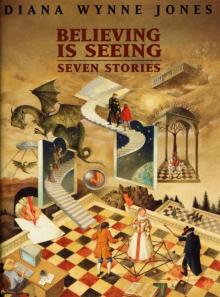 Believing Is Seeing
Believing Is Seeing Samantha's Diary
Samantha's Diary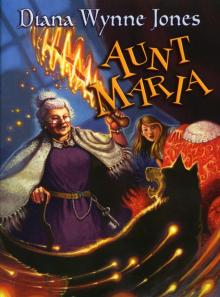 Aunt Maria
Aunt Maria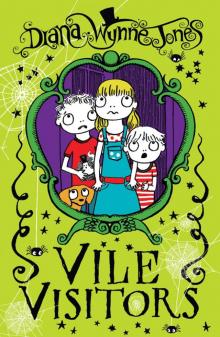 Vile Visitors
Vile Visitors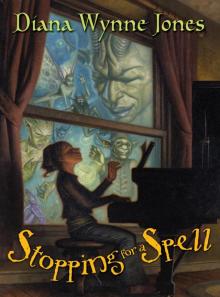 Stopping for a Spell
Stopping for a Spell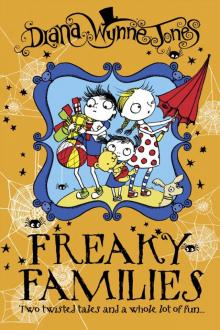 Freaky Families
Freaky Families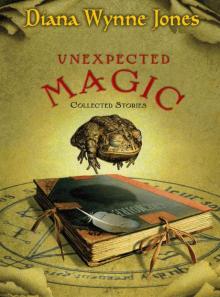 Unexpected Magic
Unexpected Magic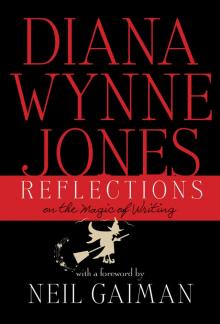 Reflections
Reflections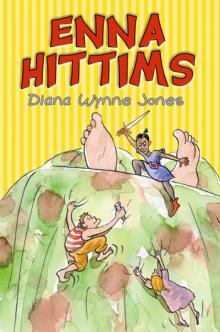 Enna Hittms
Enna Hittms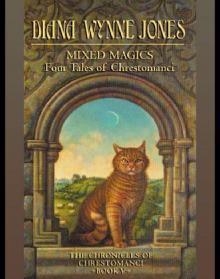 Mixed Magics: Four Tales of Chrestomanci
Mixed Magics: Four Tales of Chrestomanci